Blog Archives
Home -
Posts tagged "Animals in Captivity"
The Miami-Dade commission has served eviction papers to the Dolphin Company, the owners of the Miami Seaquarium, after the company presided over severe neglect and poor conditions for animals in their care for many years. The Miami-Dade commission has ordered the Dolphin Company to vacate the premises by the 21st of April 2024. The commission’s letter cited violations of the lease agreement which included “not just a default, but a complete disregard for the safety of the animals housed on the premises.”
The history of the park is one of sadness, neglect, cruelty and enslavement for animals. The park’s history as an amenity for humans on the other hand, is one in which it enriched a private company and in the park’s earlier years was the third largest contributor to Miami-Dade County’s revenue through lease and tax payments.
The park is behind at least $180,000 in rent, which is one reason for the Miami-Dade commission’s decision. The decision was also motivated by the park’s numerous USDA violations and the loss of its Humane Society of America certification. Animal rights organizations have spoken out against the facility for years, in some cases managing to rescue animals, such as a pair of manatees, Romeo and Juliet. At least 120 dolphins and whales have died in captivity at the park. A dolphin named Sundance recently died shortly after a USDA inspection, where it was noted that the dolphin had “signs of gastric distress.” Federal inspections showed that the park’s infrastructure was deteriorating. A dolphin was found with a two-inch nail in its throat. Another dolphin was found with a broken metal bolt in its mouth.
One of the park’s major problems was that it couldn’t keep staff. Multiple staff resigned at the conditions of the park, and some alleged retaliation when they tried to speak up against the conditions. Due to money problems and difficulty retaining staff, the park didn’t have enough veterinarians to attend to the animals. The veterinary lab lacked basic tools and the animals were denied surgery, including a sea lion with eye pain, who stopped eating. One of the park’s animals, an Orca named Tokitae, gained recognition for all the wrong reasons, because the tank she was forced to live in was the nation’s smallest tank. Since coming to the world’s attention, Toki, also known as Lolita, has died.
Why did it take so long for the neglect to be put to an end? There is a bureaucratic process that has to happen to hold such facilities accountable. The park was known to be an unhealthy and cruel place for animals to live for decades. Attention wasn’t focused on the park soon enough because parks like these were for many years deemed to be acceptable entertainment and education for humans. The roles of animals at these parks, who are forced to perform for humans, and who are kept in restrictive conditions and separate from family members, were not questioned. It’s now time to question the rationale for keeping animals in these facilities. There may be some conservation reasons for keeping some species of animals captive, but even then, keeping animals in captivity, where they can be exploited, should be viewed with public skepticism and treated as a last resort.
|
Tags: Animal Neglect,
animal rights,
Animals in Captivity,
Dolphin,
Kevin Boileau,
Marine Animals,
Marine Park,
Miami Seaquarium,
Nazarita Goldhammer,
Orca,
Toki the Orca,
Whale
The death of New York’s beloved owl Flaco was a tragic event that drew attention to the way in which a city-dwelling bird’s life can be tragically cut short. The cause of death? It seems that Flaco died after a collision with a building. Flaco’s death was also attributed to 4 kinds of rat poison that were found in his system. Additionally, he was also found to have a severe case of “pigeon herpesvirus” from eating feral pigeons. Toxicology also showed a breakdown of the pesticide DDT, but the levels of the pesticide were not significant enough to cause his death. The rodenticide and virus were both capable of causing severe illness, according to Dr. Paul Calle, chief veterinarian for the Wildlife Conservation society, though it’s unclear which one was responsible for the bird’s death. Flaco’s ultimate cause of death, a collision with a building, would likely have been caused by the bird flying disoriented while he was suffering from illness and poisoning.
Bird collisions are an incredibly common cause of death for birds. They are the second most common cause of death after domestic cats. Collisions with building glass kill between 90,000 and 230,000 migrating birds in New York City each year, according to Audubon NYC’s research. In addition, birds that dwell in big cities have much more contend with, as they have to deal with toxic pesticides commonly used by private homeowners in big cities like New York City. Wild Bird Fund director Rita McMahon said that rodenticide is to blame for 84% of the deaths of birds that they encounter, and that the poisons can stay in a bird’s system for up to 100 days.
Flaco was a Eurasian eagle-owl that escaped the Central Park Zoo after someone cut his cage’s stainless steel mesh. The Zoo attempted to recapture Flaco, but he began to improve his hunting skills and gain independence, so the Zoo were not able to entice him back with food.
Sightings of Flaco began to be common. New Yorkers celebrated the bird’s presence and his successful bid to live in the wild. The Central Park Zoo cautioned that Flaco might be endangered by eating a poisoned rodent or might prey on sensitive species. Flaco seemed to be doing well, but then in February 2024, a fallen owl was reported to the Wild Bird Fund, and the owl was confirmed to be Flaco. New Yorkers mourned his death and created a memorial to Flaco at the base of his favorite tree in Central Park.
Flaco’s death was a tragedy, but his life was an inspiration. Though he was safe at the Zoo, he followed his natural instinct for freedom and lived a life of independence before he died. His death has focused attention on the issue of bird safety in cities, and what humans can do to make cities safer for birds. New York Senators have renewed a push to pass the Dark Skies Act and renamed the Bird Friendly Buildings Act the FLACO Act. These pieces of legislation will require state owned buildings to make bird friendly provisions in their architecture and to reduce lighting at night, which has been shown to disorient night migrating birds that may fly into cities and die by collision. Birds face a host of threats in cities, including bird collisions, habitat loss, and poisoning by pesticide or rodenticide.
Flaco the owl was an animal who stood out and reminded city dwellers that animal lives have meaning. With the publicity around his death, now is a good time to push local legislators to take steps to introduce legislation to make cities more bird friendly. You can also reach out to your local bird conservation societies to see how you can join the effort to protect birds in cities.
Animal welfare services are investigating the Ontario marine park where 14 whales and 1 dolphin have died in the space of a few years. The park is a big employer in the area and it has denied any wrongdoing, including any water quality issues that could have led to deaths at the park.
The park has a vested interest in keeping animals in roles where they are visible to the public, and formerly held shows in which its animals performed tricks and members of the public could feed its animals.
During a 2 year period, 12 beluga whales died. At the same time, provincial authorities had raised concerns about the park’s water quality and had recognized that all of the marine mammals were in distress. There have been protests and demonstrations for many years against the treatment of animals in the park. Citations against the park have resulted in 5 counts of animal cruelty by the Ontario Society for the Prevention of Cruelty to Animals in 2016 and 6 counts of cruelty by the OSPCA in 2017.
The animals that died include a beluga whale named Ikora, who died on October 24th 2019 and 10 others including a beluga named Bull, who died on November 23, 2021. 3 more deaths were confirmed in 2023, including Kisko, who was called “the world’s loneliest whale.” She was the last killer whale in captivity in Canada, and was originally captured along with Keiko, the star of Free Willy. She endured loneliness throughout her life in captivity, as she was confined to a small tank without companions. She died at the age of 47. The other animals who died in 2023 were a dolphin and a whale.
At one time Marineland had the most captive belugas in the world. Since Canada passed a law phasing out marine captivity, the park was forced to adjust. It is now shifting towards educational efforts. The animals are no longer available to the public and forced to perform tricks.
The lack of information surrounding the deaths of these animals obscures the conditions they may have been living in before they died. Captivity not only exposes animals to psychological risks of loneliness and confinement and the psychological pressure of being on display, animals could also suffer from neglect, poor environmental conditions and chronic health issues. Marine animal captivity should not be the norm unless it is explicitly for conservation purposes. The profit bottom line too often exposes animals to the risk of cruelty and neglect.
One of the saddest things about animal captivity is how it leaves animals alone and isolated. An elephant named Flavia who was called “the saddest elephant in the world” has just died at age 47, after collapsing in her enclosure. Flavia was suffering from depression before her death and spent most of her life alone. What the public sees as merely a viewing enclosure where humans passively watch animals, the media have rightly called “solitary confinement.” Elephants are social animals who form strong bonds within their families, just as humans do. This kind of living situation for a human would rightly be branded as a form of torture. Why is it OK for animals to be abandoned in isolation? Laws that prevent harm to animals don’t yet accommodate for the kind of harm we assume is only relevant for humans – that is psychological harm. Animals are not merely automatons, they are social creatures. Read more about Flavia the elephant and sign the petition to ask Cordoba zoo not to place an elephant in the same situation as Flavia:
https://ladyfreethinker.org/sign-justice-for-saddest-elephant-in-the-world-who-died-in-solitary-confinement/?utm_source=Newsletter&utm_medium=Email
https://www.independent.co.uk/news/world/europe/elephant-worlds-saddest-dead-zoo-spain-a8809071.html
A heartbreaking story about an orca whale who mourned her dead calf has the public thinking about Lolita, the captive orca whale again.
And as Lolita reaches retirement, this time it could really make a difference – not only to her, but to her endangered family as well.
Protests have come and gone after years of campaigning to free the lonely orca who occupies a tank that is much too small for her. Lolita lost her mate several years ago and spends much of the time floating, in a listless trance.
What inspired the wake-up call this time was a story about a Southern Resident Killer Whale from Lolita’s orca whale clan. The female whale, called Tahlequah, carried her dead calf with her for 17 days across hundreds of miles, refusing to let go. Some believe this was a deliberate act of mourning, like a funeral. The story has made an impression on how people think about the emotional ties between orcas. This is important for Lolita as there are doubts over whether she will be reunited with her family when she retires, who she hasn’t seen for 47 years. Lolita still sings the songs of her Pod. At 50 years old she has spent most of her life in captivity.
Thinking about Lolita in the context of her family is really important, even if Lolita is never reunited with them. Lolita comes from a population of whales called the Southern Resident Killer Whales. After a brutal roundup in the 70s, baby whales, including Lolita, were separated from their distraught parents and taken to various entertainment parks around the country. Orca whale society is matrilineal and orca whales stay with their mothers their whole lives. Lolita has been in captivity a very long time, so there are questions over whether she would reintegrate successfully with her family, and genuine concerns about her carrying a pathogen that would harm her family. On the other hand, the closeness and deep emotional ties of orca whale society make it heartbreaking that Lolita would never return home.
Thinking about what home means for a captive whale like Lolita means we can’t ignore the fact that Lolita’s family is under threat. We as humans owe a debt to this animal population and culture, that we have stressed, threatened and dispersed. After the Southern Resident Killer Whale population were terrorized and brutalized in the 70s, their population never recovered, and their endangered species designation doesn’t do enough to protect them. It has done nothing to maintain a food source for them, for one. These whales are literally starving due to a lack of their natural food, the Chinook salmon (which is also endangered). A system of dams keeps the orcas from their food. Orca whales have been giving birth to calves who don’t survive, and all pregnancies in the last three years have failed. This doesn’t even take into account pollution and disruption from boat traffic. There are proposals to free up food sources at some of the dams, but these are moving too slowly.
We must act now to protect Lolita’s family, and to ask that genuine efforts are made to return her home where she belongs. Lolita’s freedom and our attention on this issue is nothing less than an act of atonement.
Please read, share/sign and donate.
Read More:
https://blogs.scientificamerican.com/observations/free-lolita-the-killer-whale/
https://www.miamiherald.com/news/business/article185517463.html
https://www.nrdc.org/experts/giulia-cs-good-stefani/penn-cove-captures-why-southern-resident-orcas-need-us
https://www.care2.com/causes/grieving-mother-orca-carried-her-dead-calf-for-17-days.html
This last week, the world has been in mourning for Koko the beloved mountain gorilla who learned to speak in American sign language. Koko was born on the 4th of July 1971, hence her name “Fireworks-child” (in Japanese), shortened to “Koko.” This fireworks child was a prodigy – she learned to play the recorder, and to sign over 1,000 signs and understand 2,000 words of spoken English. Koko was sad when she lost a pet, spoke about her longing for a child (the pet kitten was a close substitute) and talked about death and her own death. She also played with words and mixed them up in new combinations. She once described herself as a “fine-gorilla-person.”
Did humans teach Koko about language, or did Koko teach humans? Koko could speak in sign language,
but also more importantly, she could listen. When she listened, she interpreted things in her own way.
Despite criticism of the Koko project (which stated that Koko was mimicking her trainers), Koko
responded in unexpected ways. When she was asked where gorillas go to when they die, she said
“comfortable-hole-bye.” There were a few occasions when she expressed deep sadness and grief, like
when her pet kitten was hit by a car and killed.
Language is often used as an excuse to elevate humans above other animals. There were scientists who
felt Koko’s use of language was meaningless, as she didn’t learn grammar and syntax. But throughout
her life, Koko used sign language not as a lifeless toy or tool to get food and water, but a way to
communicate and describe her world. Communication –- rather than language –- was the key. Koko
and her researchers built a rapport together, where words could mean more than the dictionary
definition, they could mean complex emotional states and refer to shared understanding between
Koko and the researchers. Above all, what Koko taught us is that language is a human invention, but
communication is common to all animals. For that, we owe a debt to Koko, our Gorilla teacher.
The group that came to the rescue of baby elephant Suman have released a video showing the elephant’s captor inflicting relentless violence on elephants. Wildlife SOS launched a campaign to save Suman the baby elephant, but still nothing has been done by the Rajasthan government, despite the fact that elephant trafficking is illegal.
The baby elephant was already in a delicate state when evidence of her captivity drew outrage. She was penned in a small cage, tied by her foot and making repetitive movements that clearly showed distress. Her parents and sister have since been reunited, but this six year old baby elephant is still at the mercy of almost certain violence, abuse and mistreatment. In the video her captor is shown mercilessly beating and tying up and burning the foot-pads of elephants. Humans who protested have also reportedly been fired or attacked.
Animal psychologists are worried about the damage this trauma will do to Suman. Elephants live just as long as humans and so the “memory of an elephant” could be a liability as well as a gift. The sooner the baby elephant can be freed, the more likely she is to heal from the harm and isolation done to her.
Please donate, share and sign Wildlife SOS’s petition: http://wildlifesos.org/save-suman/?gclid=EAIaIQobChMIsfTDgqTU2wIVTbnACh0VLgMOEAAYASAAEgIQ8PD_BwE
More Info on this story:
http://www.newindianexpress.com/nation/2018/jun/07/rajasthan-government-slammed-for-failing-to-take-action-against-owner-who-tortured-baby-elephant-1824676.html
http://www.dailymail.co.uk/news/article-5835245/Shocking-video-shows-Indian-trafficker-mercilessly-beat-burn-elephant.html
http://www.timesnownews.com/mirror-now/society/article/shocking-visual-of-merciless-trafficker-torturing-elephants-in-jaipur-goes-viral/239966


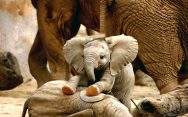
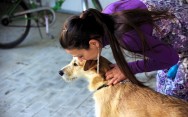

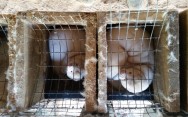
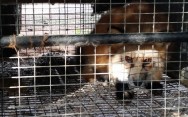
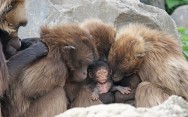
Social Media